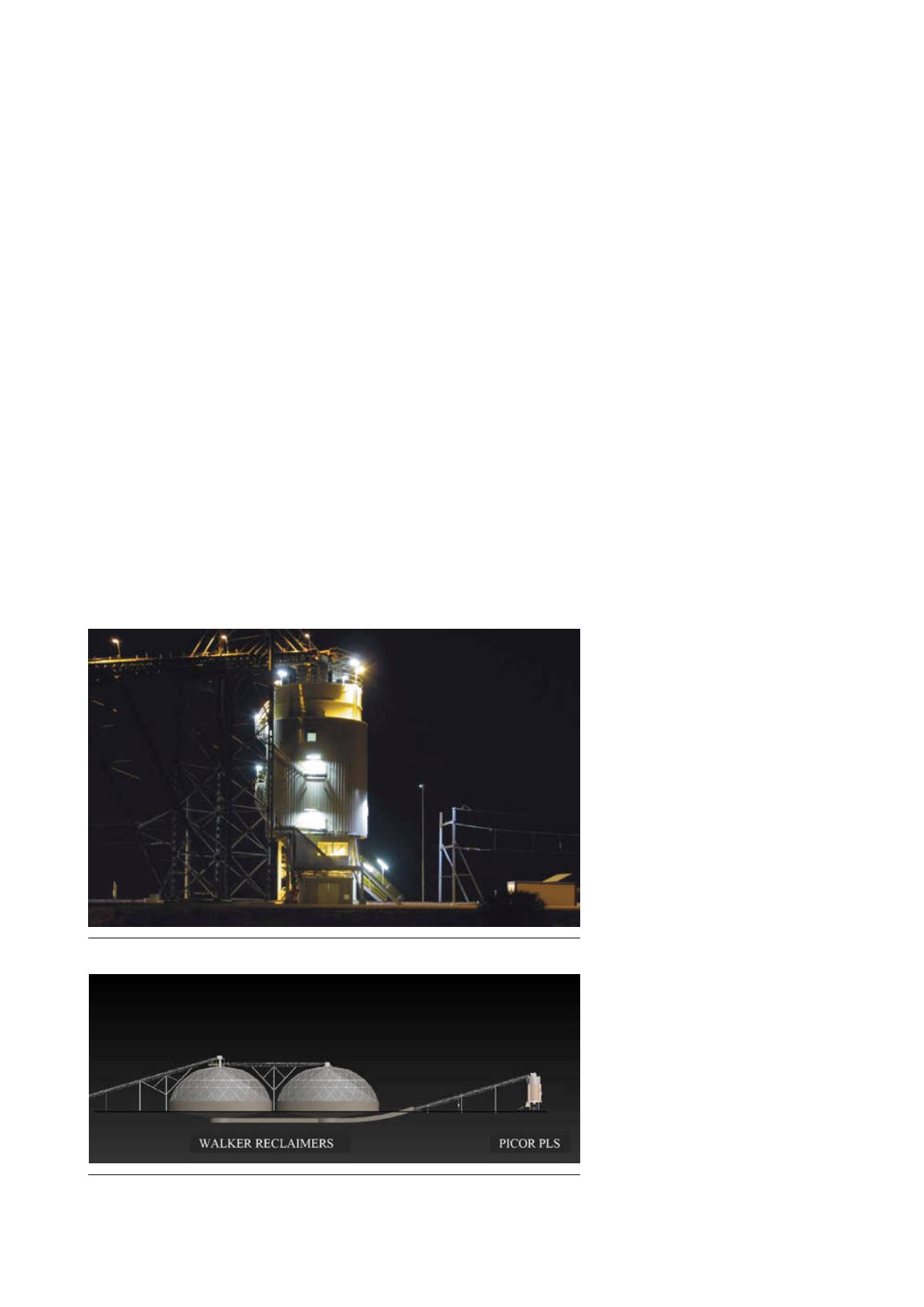
located near populated areas, which are
particularly sensitive to the adverse
environmental effects that can be caused
by stored bulk material.
Loading and unloading barges and
ships is often time consuming and
contributes to air and water pollution.
Since the operating cost of ships is
almost the same in port as on the high
seas, delay in loading can be a significant
factor in the cost of shipping.
Current practices
Current practices consist of loading bulk
material into vertical silos by use of
some type of elevating conveyor and
discharging as required for processing or
loading. The capital cost of vertical silos
is quite high, while the operating cost is
low. Often storage requirements are so
large, the capital cost of vertical silos and
their attendant filling and reclaim
conveyors becomes impractical. It then
becomes necessary to store the bulk
material on grade, while using some
type of mechanical equipment to
physically move the material from the
stockpile to a conveyor for transport to
processing or loading. Typically the
capital cost of this type of storage system
is moderate but the reclaim cost is
generally very high. In addition, the
environmental effects and cost to
mitigate those effects can be significant.
Technology allowing the precise
loading of trains at very high rates
without particulate emissions has been
developed over the past several years
and is nowmature technology in use
worldwide. Loading and unloading of
ships and barges has not kept pace. Even
with modern expensive equipment, the
time to load and unload barges and
ships – and the environmental impact
from loading and unloading methods –
has much room for improvement.
Ocean-going bulk carriers are subject
to hazards not applicable to other
vessels. Bulk carriers are required to be
equipped with deck hatches through
which the bulk material is loaded and
unloaded into the ships holds. These
hatches can leak leading to a number of
potentially disastrous problems.
Material in the holds can, in heavy seas,
shift – causing potential dangers.
Proposed solutions to the
problems
Amethod exists allowing the storing
and reclaiming of an unlimited amount
of bulk material without the use of
mobile equipment or manpower. This
method isolates the material from the
environment thereby protecting the
material and eliminating pollution
hazards. The capital cost of this method
is generally lower than competing
systems and the operating cost of the
system is very low.
The proposed method (the patent
pending Walker Reclaimer
1
) consists of
one or more shallow inverted conical
surfaces on which the material is stored
with a reclaim opening at the apex of the
inverted cones. Each reclaim opening is
equipped with a flow control gate,
below which is a reclaim conveyor sized
to handle the requisite flow. The
underside of the cone is equipped with a
number of vibrators, a rubber bed and a
support surface. The top of the cone is
equipped with a flow surface suited to
the material to be handled.
Operationally the system is very
simple. After the system has been loaded
and material is to be reclaimed, the flow
control gate is opened. Material then
flows by gravity onto the conveyor
below the flow control gate. The flow
rate is controlled by the conveyor speed
and a flow control gate mounted in the
conveyor skirt board.
After flow has been established and
the top of the flow channel has lowered, a
ring of vibrators around the reclaim
opening is energised, causing the material
on the cone surface to move into the flow
channel. When that material on the
surface moves into the flow channel, it is
not available to support the material
above. As the material above loses its
support, it flows causing the flow channel
to widen. As the top of the flow channel
continues to lower and widen, additional
vibrators are energised until all vibrators
are energised and material on the entire
cone is mobilised. All of the stored
material can be reclaimed without the use
of mobile equipment or manpower.
Figure 2. Integrated Train Precision Loading System
™
(PLS).
Figure 1. Picor Train Precision Loading System
™,
Republic of South Africa.
62
|
World Coal
|
March 2016


